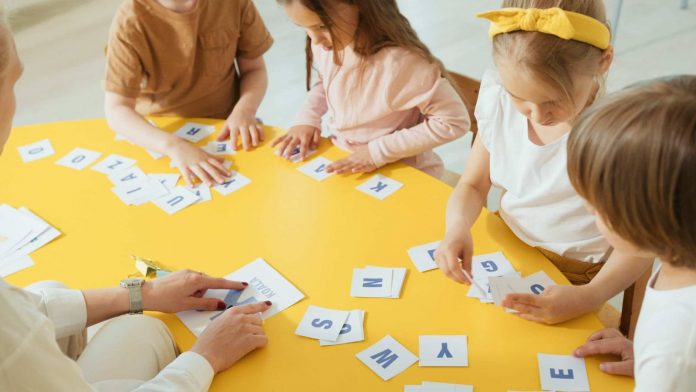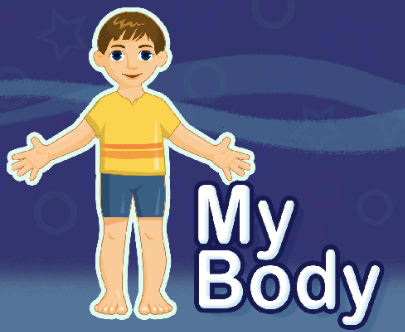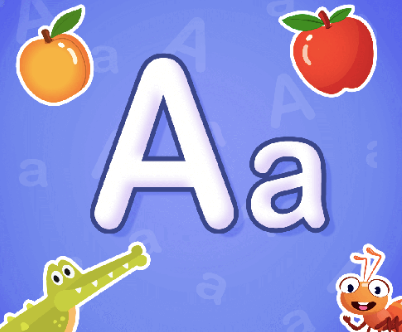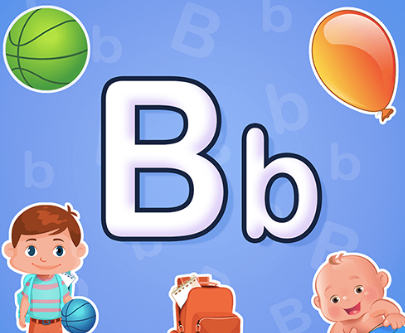Alphabets form the core foundation for kids to learn about words and stories and acquire knowledge about the world around them. Hence, teaching the alphabet to the kids is the first step to introducing them to the world of language and vocabulary.
Math & ELA | PreK To Grade 5
Kids see fun.
You see real learning outcomes.
Watch your kids fall in love with math & reading through our scientifically designed curriculum.
Parents, try for free Teachers, use for free
As parents, we are often worried about how to begin teaching the alphabet to preschoolers in a manner they understand. This teaching plan for kids should start at home before your kids head to kindergarten and school. This article has compiled easy and proven fun ways to teach the alphabet to your kids.
We will also discuss letter recognition and the advantages of learning alphabets for kids, so you have nothing to worry about!
15 Ways You Can Teach the Alphabet to Your Kids
1. Singing Them Alphabet Songs
Kids love listening to music and will catch the rhythm soon. If you play some children’s songs, they will be humming the song all day! Therefore, a great way to introduce your kids to the alphabet is by singing alphabet songs with them.
We are all acquainted with the famous “A, B, C, D…” song, but there are several other alphabet songs on YouTube that you can play for your kids. These songs have visuals with letters for your kids that will promote visual learning too.
2. Alphabet Writing
Learn to Write Letters Confidently
Build letter-writing skills through step-by-step practice
Keeping learning exciting ensures your child stays engaged and motivated. If you are wondering how to teach alphabet writing, ditch regular tracing worksheets and try these themed letter writing worksheets instead! Each worksheet features fun themes, like animals, to make practicing alphabet writing more enjoyable for kids.
These worksheets include dotted letters with guiding lines to help your child trace accurately and stay within the lines. The engaging themes keep their interest alive while strengthening handwriting skills and letter recognition.
3. Pop, Match, and Highlight the Alphabet
Highlight, Match, and Learn the Alphabet
Boost letter recognition with hands-on matching games
This online game is designed to make alphabet learning exciting. Your child will begin by opening a blank book and tapping on characters to create splashes, revealing hidden letters on the page. This interactive activity keeps their curiosity alive and boosts focus. After finding all the letters, your child will drag and drop them into a grid, where they’ll match each letter to words that start with it. This step builds strong letter-sound connections and improves word recognition skills.
Finally, your child will explore a fun text filled with words connected to the letter they’ve learned. With this game, your child develops letter recognition, phonics skills, and confidence—all while having fun!
Related Reading: Best Alphabet Learning Apps for Kids
4. Letter Matching Games
Match Uppercase and Lowercase Letters
Practice matching letters with engaging cut-and-paste fun
It’s important for preschoolers to engage in hands-on activities to strengthen their understanding of letters. Letter Matching Games can be a great way to familiarize your kids with the alphabet. These cut-and-paste worksheets are perfect for matching uppercase and lowercase letters while making learning interactive and fun. Your child will cut out uppercase letters and paste them next to their lowercase matches. This activity not only builds letter recognition but also improves fine motor skills and hand-eye coordination.
Tip: Supervise your little one while they use scissors for cutting to ensure safety and guide them as they complete the activity. Learning together makes it even more enjoyable!
5. Alphabet Boxes
Making the alphabet learning process fun and exciting will keep your child on their toes to learn new words. By creating alphabet boxes, you can help your child discover newer objects and toys related to the alphabet.
For example, you can choose the letter ‘C’ for a particular week and curate a box full of crayons, color pencils, carrots, and so on. As you show them the different objects that begin with the letter ‘C, they begin to remember them and the associated letter.
Once they are acquainted with all 26 letters, you can ask them to guess the letter from the box’s contents. This can be a fun way to teach the alphabet and keep your child excited to explore more boxes.
6. Letter Tracing Game
Trace Letters with Firefly Trails
Follow glowing fireflies to trace letters perfectly
If you want to skip the conventional letter-writing practice and make it super fun and interactive for your child, try these letter tracing games! In this engaging activity, your child will follow glowing fireflies as they guide them to trace both uppercase and lowercase letters.
The fireflies light up the path, and your child traces over the letters, leaving behind a magical, luminous trail. This game not only helps improve letter formation but also boosts fine motor skills and hand-eye coordination. Configuring how to teach the alphabet is easy when you can figure out fun ways to keep your kid engaged in learning.
7. Use Letters as Means of Interdisciplinary Learning
While learning the alphabet can get boring if you are simply reading the same letter to your kid, a great way to stimulate the letter-learning process is using letters for other exciting activities or interdisciplinary learning.
For example, if you teach the letter “H,” you can teach them about the virtues of honor and humbleness. You can ask them to name an object with the letter ‘h,’ a food that starts with ‘H,’ and so on. This method of teaching letters to preschoolers is interactive, and kids never lose interest in the whole process.
8. Alphabet Coloring
Build Alphabet Skills with Coloring
Trace and color letters while learning their sounds
Preschoolers love coloring, and incorporating it into letter learning isn’t just fun—it’s highly effective. Research shows that using color in educational activities enhances memory retention by engaging attention and helping children better distinguish and remember key information.
And if you are wondering how to teach alphabet to beginners, these letter coloring worksheets are a great start. Each worksheet features large, bold letters for tracing and coloring, alongside themed images (like animals) that correspond to the letter. This multisensory approach not only builds letter recognition but also strengthens fine motor skills and hand-eye coordination. Coloring activities help children make stronger connections between what they see and what they learn, reinforcing their memory and improving recall. As your child enjoys coloring, they’re also practicing essential pre-writing skills in a playful, stress-free way.
9. Flashcards
Flashcards are a great way to help kids memorize the alphabet. They come with pictures so that children can associate the letter with an object that starts with the same letter. However, some flashcards have images that may have the sound associated with the letter at the start when pronounced but not the actual letter in the spelling.
Use flashcards with objects that start with the same letter displayed on the flash. Anything taught to preschoolers must be specific and simple so they can retain whatever they learn. For early learners, flashcards must be precise.
10. Sort Confusing Letters
Decode Commonly Confused Letters
Distinguish letters like ‘b’ and ‘d’ through coloring
Research shows that children often confuse letters that look similar, like ‘b’ and ‘d,’ or ‘m’ and ‘n.’ A study of 529 first graders revealed that such confusion is common in early reading development. Additionally, children may reverse letters during writing—a behavior known as mirror writing—which naturally decreases as they gain more reading and writing experience.
This research underscores the importance of targeted activities that help children distinguish between similar letters and build their confidence in reading and writing. Here are some confusing letters coloring sheets. Each worksheet focuses on a pair of commonly confused letters, encouraging children to use different colors to identify and distinguish them.
For instance, your child can color the letter ‘b’ in yellow and ‘d’ in orange or ‘m’ in yellow and ‘n’ in orange. This color-coding approach helps children recognize the differences between letters more clearly while reinforcing correct letter identification through repetition.
11. Indulge in Making Foods Shaped Like Letters To Learn Faster
Kids love to eat; hence one of the best ways to teach the alphabet to 3-4 year olds is by giving them food in the shape of letters or arranging baking sessions where they can use letter-shaped cookie cutters for making cookies.
There are cereals shaped like letters, noodles in the shape of letters, and letter-shaped biscuits that can make snacks or mealtime fun. As they eat, they will recognize letters and learn faster. The idea is to push letter recognition throughout the day so that kids can easily learn the letters over time.
12. Reading Alphabet Books
Learning about letters from alphabet books is the best and most traditional way to learn the alphabet. With several alphabet books in different colors and captivating graphics, you can introduce your kids early to the alphabet. Most alphabet books have activities that children can work on to practice the alphabet. If you are wondering how to teach ABCs to your kids, then get your hands on alphabet books as a first step. Eventually, you can introduce them to different activities like the ones mentioned above.
With SplashLearn’s interactive Read-Aloud Books, this experience becomes even more personalized and effective. These books come with two options: “Read to Me” and “Read by Myself.” Your child can choose to listen along and develop their listening skills or practice independent reading. Additionally, you can track your child’s progress on a user-friendly dashboard, allowing you to monitor their milestones and engagement as they explore stories on their own.
These read-alouds are perfect for interactive reading sessions, helping young learners expand their vocabulary, improve listening skills, and build early literacy. They’re great for both parents and teachers, fostering a love for reading while making learning fun and educational.
13. Sensory Activities
Kids should be introduced to learning the alphabet in a way that involves multisensory activities. When kids use different senses to get acquainted with a letter, its shape, and its feel, they tend to remember longer. As children have a smaller span of attention, they can pick things faster by engaging their senses in a learning activity.
Therefore, sandpaper letters are a great way to introduce children to the alphabet. They can run their fingers through the shape of the letter and have a memory of the shape of the alphabet by tracing the sandpaper letters. You can also put up a sand writing tray, where your kids can draw the letters through the sand with their fingers.
14. Teach Kids the Letters in Their Names
Children will hear their names more frequently than any other words since their birth. Therefore, introducing them thoroughly to the letters in their names and their sounds will help them understand how language works and learn the other letters faster.
As their name gives them an identity in this world, they connect to their names better than any other word. Help children become familiar with their names first to facilitate their learning of the other letters in the alphabet series. The faster they learn the letters in their own name, they will be able to memorize the other letters.
Related Reading: Best Name Writing Activities for Kids
15. Keep track of Your Kid’s Growth
While you engage your kid in different activities to learn letters, it is equally important to keep track of their progress. By the end of each week, you can assess how many letters they have learned and the number of words or things associated with those letters they can identify, and give them activities to practice more.
Track Alphabet Learning with Ease Using SplashLearn
SplashLearn takes the guesswork out of tracking your child’s progress. With every alphabet game they play, you’ll get detailed reports showing which letters they’ve learned and where they need extra support. The platform’s smart learning algorithm adapts to your child’s pace, creating a personalized path that ensures they stay excited and never feel overwhelmed. Each game builds their skills step by step, turning alphabet learning into a fun and effective journey.
This is how your dashboard will look once your child is set up, making it easier than ever to stay involved in their learning journey!
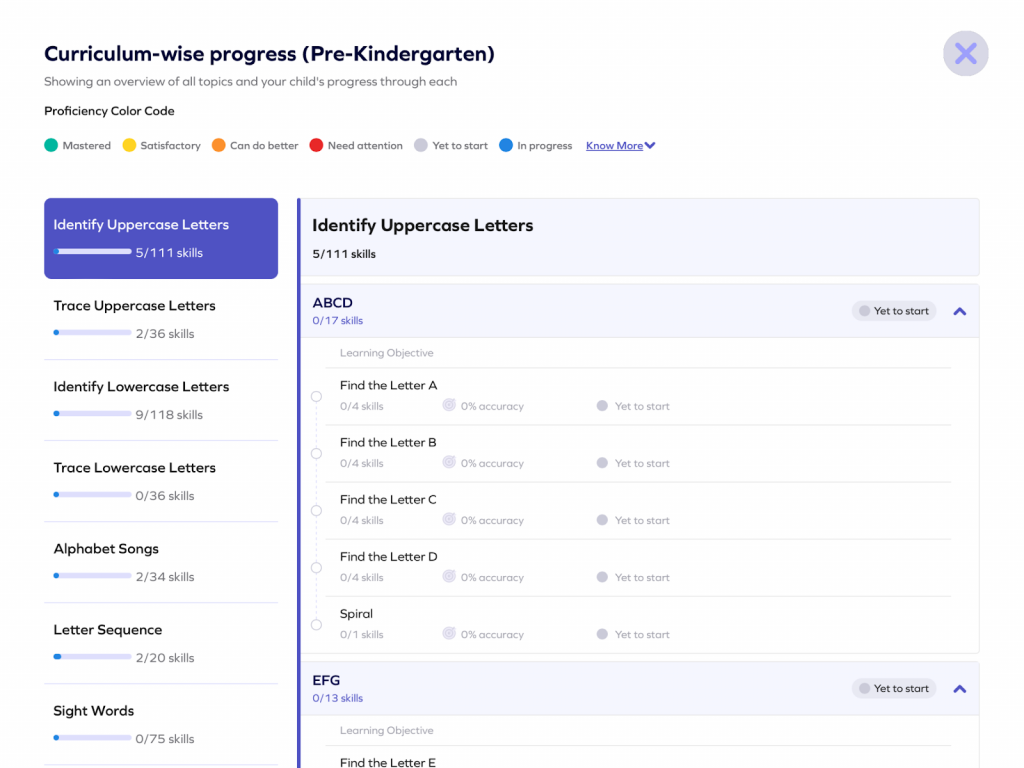
Now that we have learned how to teach alphabets to preschoolers in a fun way, let’s understand the concept of letter recognition for further clarity on the matter.
Related Reading: Easy Steps to Teach Kids to Read
What Is Letter Recognition?
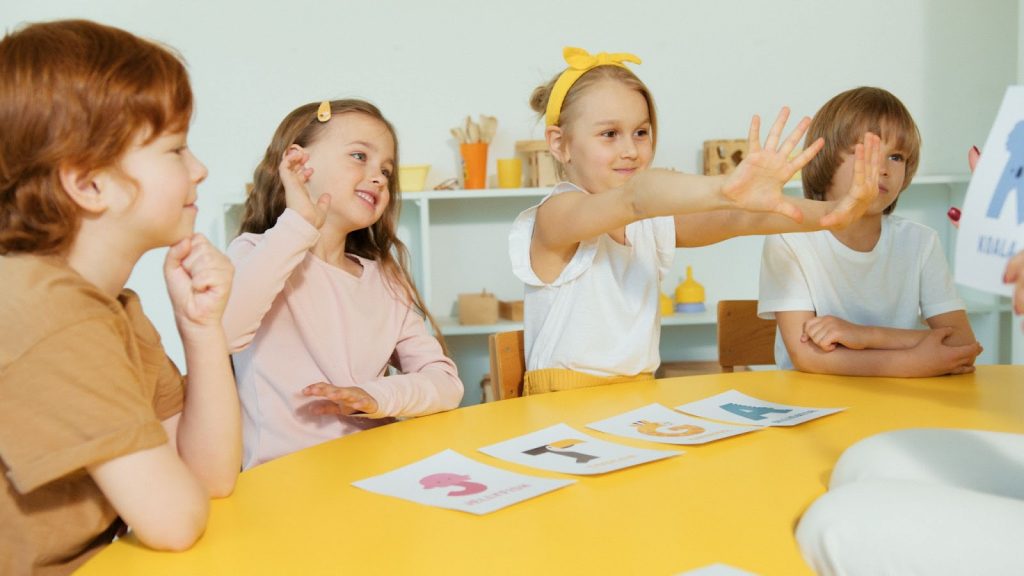
Letter Recognition happens when your child can easily distinguish between all 26 letters in the alphabet and pronounce them clearly. They may be able to sing the ‘ABC song’ or be fluent with the first few letters in the alphabet, but when they can randomly recognize the letters and pronounce them individually, they have started recognizing the letters.
By asking them random questions about the letter a particular word starts with or pointing out writing and asking them to read out the letters word by word, you can ensure whether your kid can do fluent letter recognition. This is a brilliant way of teaching the alphabet to 3-4 year olds.
Let’s explore why learning the letter names is so important for kids.
What Are the Advantages of Learning Letter Names?
Children should be familiar with each letter name as it automatically helps them associate a letter faster in their mind and eventually become fluent in reading in their early school years. Now let’s look at the advantages of learning letter names:
- When children practice letter names, they tend to remember the sound of each letter easily.
- Children automatically learn to read better when they are familiar with the sound of each letter. It augments their pronunciation.
- As they learn letter names, they are excited to explore more letters and the words formed with those letters.
Parents often stay in a dilemma about whether they should begin with uppercase letters or lowercase letters. While learning both is crucial to be swift with the language, it is important to know the order in which you can introduce your kid to uppercase and lowercase letters.
Should Uppercase or Lowercase Letters Be Taught First?
Although children need to be fluent with both uppercase and lowercase letters before they begin to read and write, it is advisable that parents start with uppercase letters as they are more distinct and easier to remember.
Moreover, in upper case letters, only M and W can be flipped or prone to confusion; the rest are distinct. Several letters can be flipped in lowercase, such as b/d, b/p, p/q/ d/p, and n/u. Be it horizontally or vertically; children can easily flip and mistake these letters. Hence it is better to start with upper-case letters that are more precise and distinguishable.
Eventually, once your kid starts recognizing the uppercase letters, you can introduce them to lowercase letters one by one.
Last but not least, it is crucial to keep track of which letters the child knows!
Teach Your Kids Alphabets the Right Way!
Teaching alphabet letters is a continuous process and must be subtly incorporated into daily activities to help your kids become acquainted with each letter. By keeping letter magnets in the fridge, letter-shaped chocolates, or cereals, you can create a visual memory for your kids in their everyday life and eventually help them become acquainted with the sound and shape of each alphabet.
As the alphabet forms the core foundation of one’s strength in language, but instilling the activities mentioned in this blog and using simple reading techniques, you can excel in teaching the alphabet to kids.
Frequently Asked Questions (FAQs)
At what age should I introduce letters to my kids?
You can introduce your kids to the alphabet through ABC songs and alphabet games when they are two years old.
What are the four ways a teacher can teach the alphabet to kids of all ages?
The four ways teachers can teach the alphabet to kids of all ages are:
- Repeating each alphabet through conversations, dialogs, and stories.
- Allowing children to participate in physical activities that help them learn letters, such as looking for hidden letters across the room.
- Making the alphabet learning method fun and creative
By the age of 5, how many letters should my child recognize?
By age 5, children should be able to recognize the first 15-16 letters, including the letters in their names.
What are alphabet skills?
Alphabet skill involves knowing how to recognize, write, read and identify the letter sounds in the English alphabet.
What is the most important aspect of alphabet recognition?
The most important aspect of alphabet recognition is that children must be familiar with the sound of each letter. This helps them remember the letters thoroughly.
What is the right order to teach letters?
The recommended order to teach letters is to start with high-frequency ones like a, m, t, and s, then introduce letters with distinct shapes and sounds while avoiding alphabetical order.

















